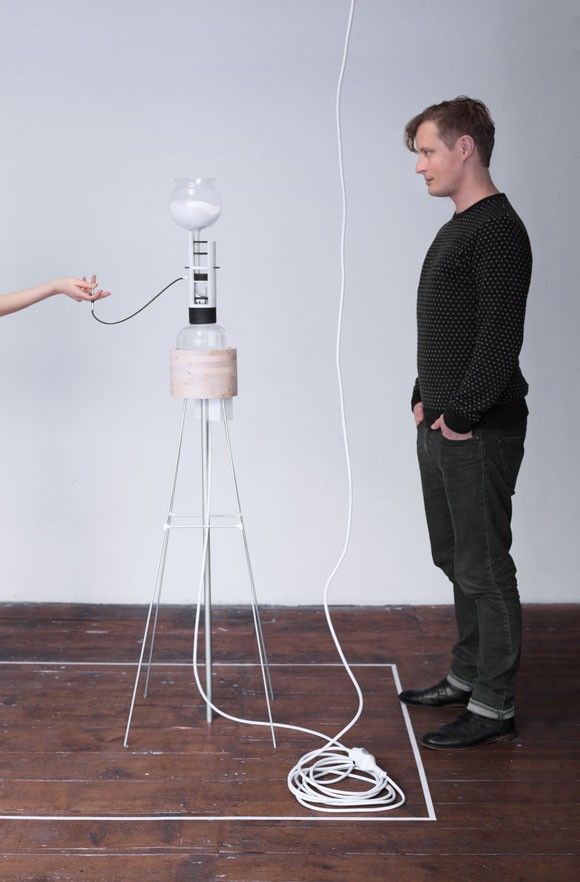
Martin Hesselmeier and Andreas Muxel
The weight of light
Light, as we usually interpret it, is an element without mass and gravity. For “the weight of light” a physics engine simulates the kinetic forces of a moving object. This mass is projected on a wave shaped structure in virtual space. The moving object is represented as a light particle in physical space. Gravity, mass, density and friction affect velocity and acceleration of these light particles. As the particles movement is based on a simulation, it does not have to adhere to the physical realities we know from everyday life. Therefore the installation goes beyond expected behaviour. Thus the matter of light traverses a reinterpretation of our known reality.

